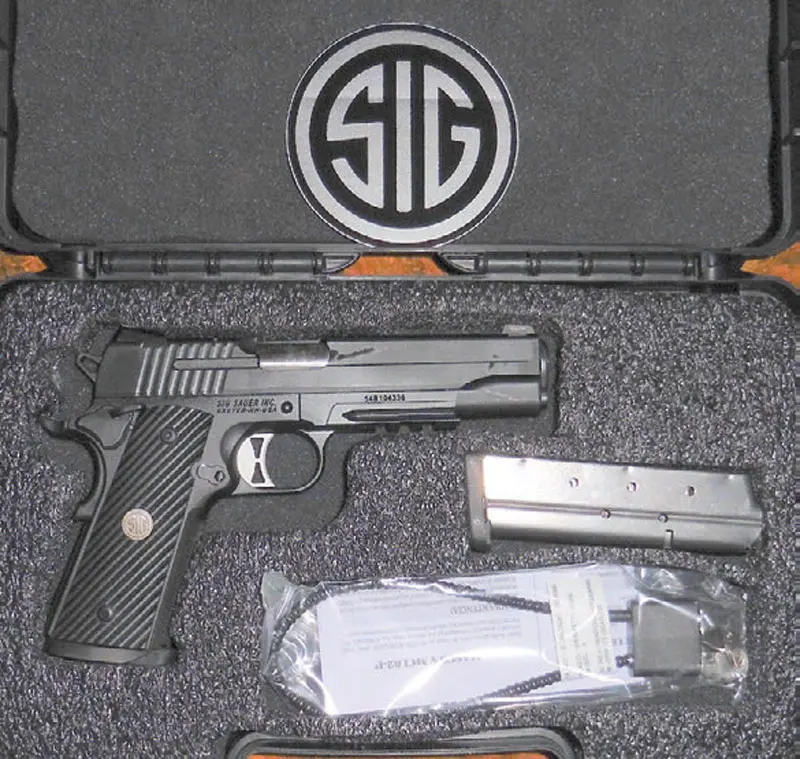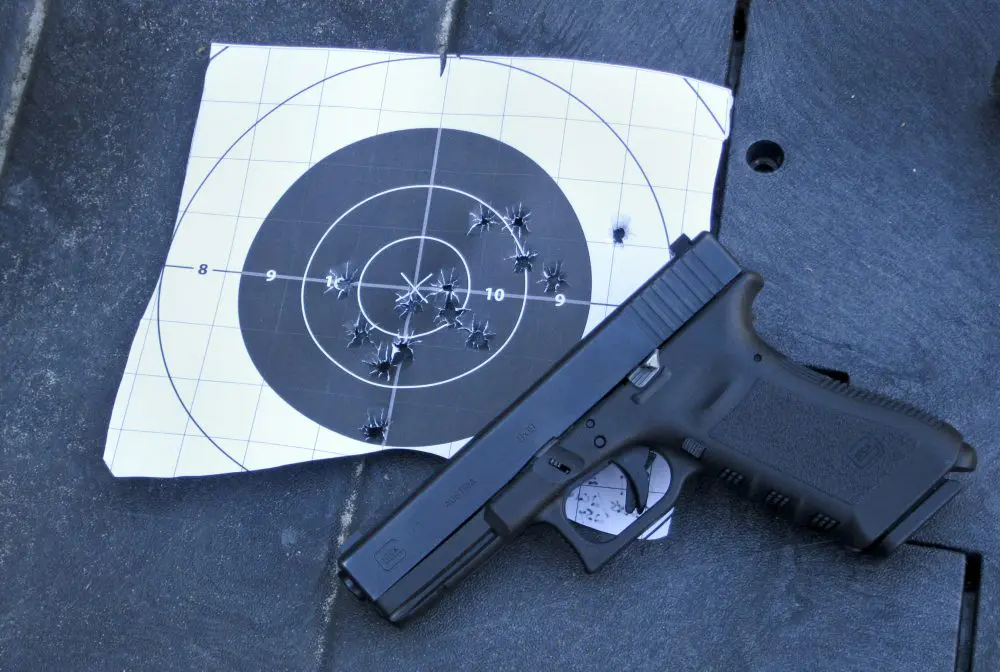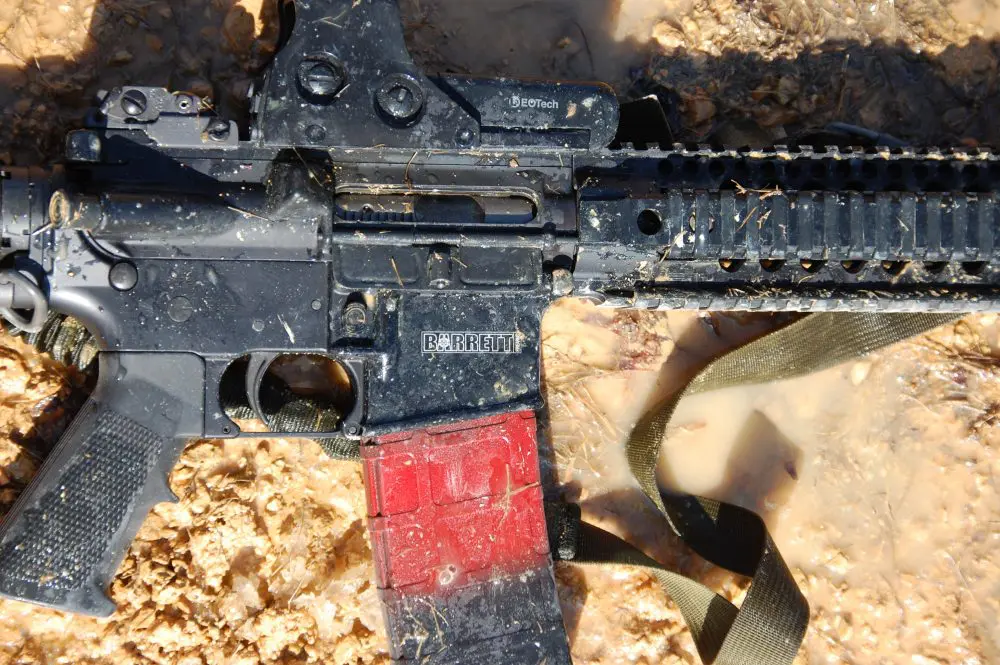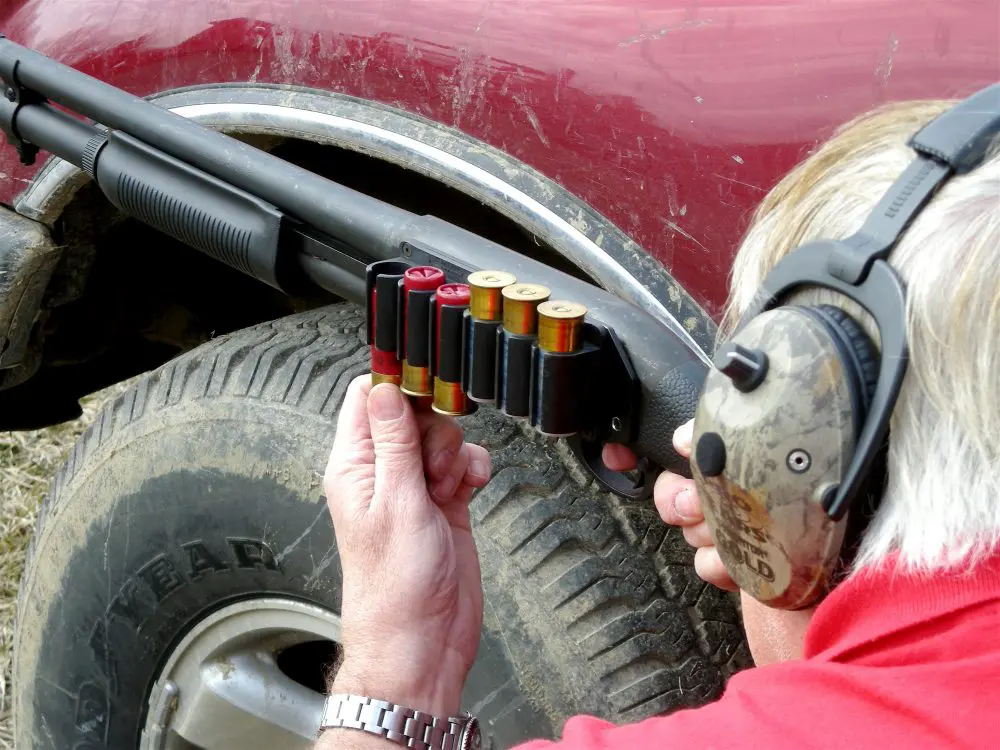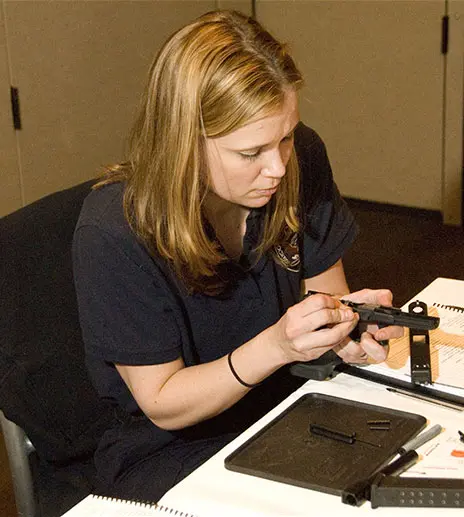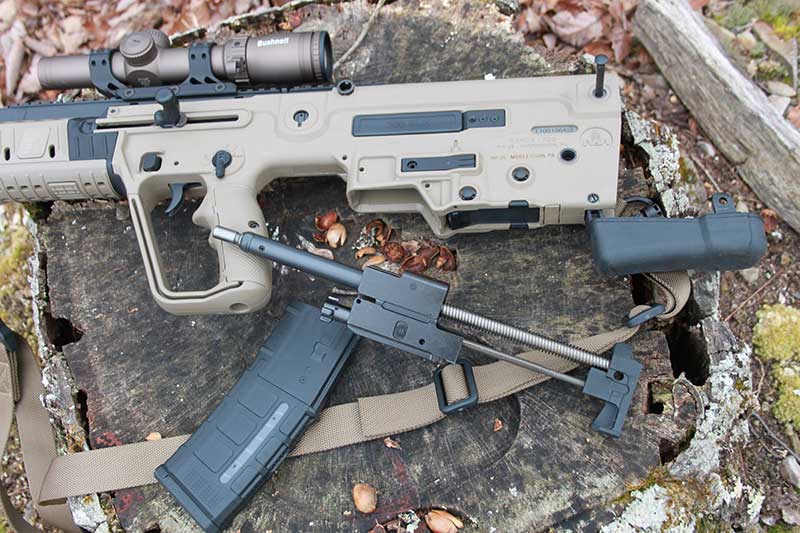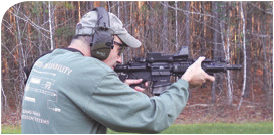IN early spring 1994, two hunters and their guide were traversing terrain so difficult they had to dismount their mules (horses couldn’t make it) and continue their quest for Texas Mountain Lion on foot.
SIG Arms CEO Ted Rowe and recently retired FBI Supervisory Special Agent icon Bill Vanderpool, a legendary firearms instructor and early ballistician at the FBI Academy, were the principal hunters. They were both armed with SIG’s most recent version of its compact P229 pistol chambered in the then-new high-performance .357 SIG caliber. The hunt was Ted’s graphic way of introducing the new round to law enforcement and the shooting public.
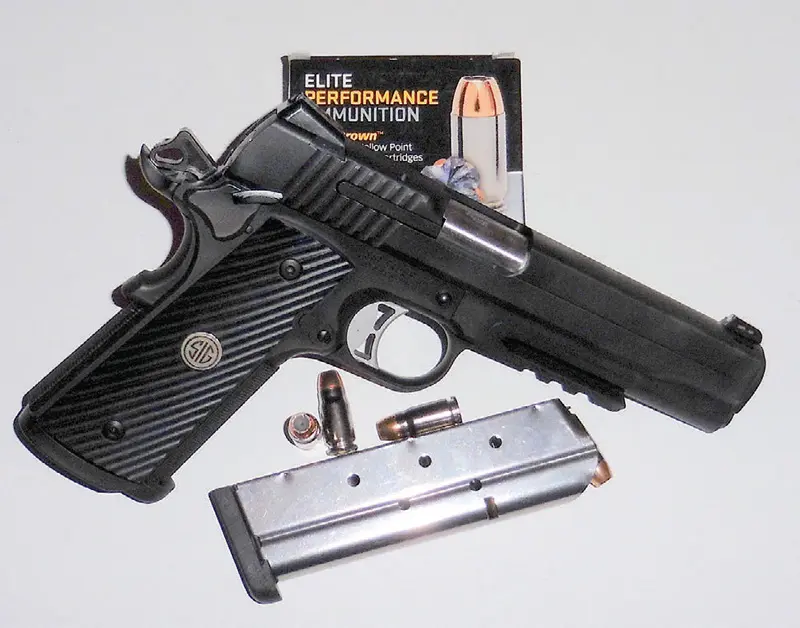
Table of Contents
.357 SIG ROUND
Federal had collaborated with SIG on the round’s development, and the pistols were charged with the company’s 125-grain Jacketed Hollow Point (JHP) ammunition. Both lions taken by Ted and Bill respectively were anchored with one shot each of this round, which was created to duplicate the 125-grain .357 Magnum JHP’s proven stopping power.
These impressive animals were the first blood drawn by what is now heralded as an excellent self-defense cartridge. While not quite the equal of the original .357 Magnum revolver cartridge, it has been adopted by some significant federal agencies, including the U.S. Secret Service and the Federal Air Marshals, and a number of state police departments. Several state police and highway patrol entities reportedly like its vehicle penetration qualities.
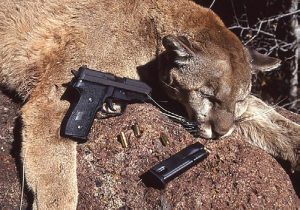
The .357 SIG is a high-pressure load. For comparison purposes, the SAAMI specifications of some other defensive calibers are as follows:
- .357 SIG: 40,000 psi
- .357 Magnum: 35,000 psi
- .38 Super: 36,500 psi
- 9mm Luger: 35,000 psi
- .40 S&W: 35,000 psi
- 10mm Auto: 37,500 psi
- .38 Super: 36,500 psi
SIG TACOPS: NOT JUST ANOTHER 1911
SIG and later SIG Sauer (SS) have been producing near 1911 clones for quite a while. Boss Ron Cohen is very familiar with the John Browning system and most likely the driving force behind its production.
Many new millennial 1911s do not completely reflect Browning’s original specifications, and the Tactical Operations (TACOPS), the handgun under review here, is no exception. Most of the changes have been introduced to correct real (or imagined) weaknesses of the 1911 platform.
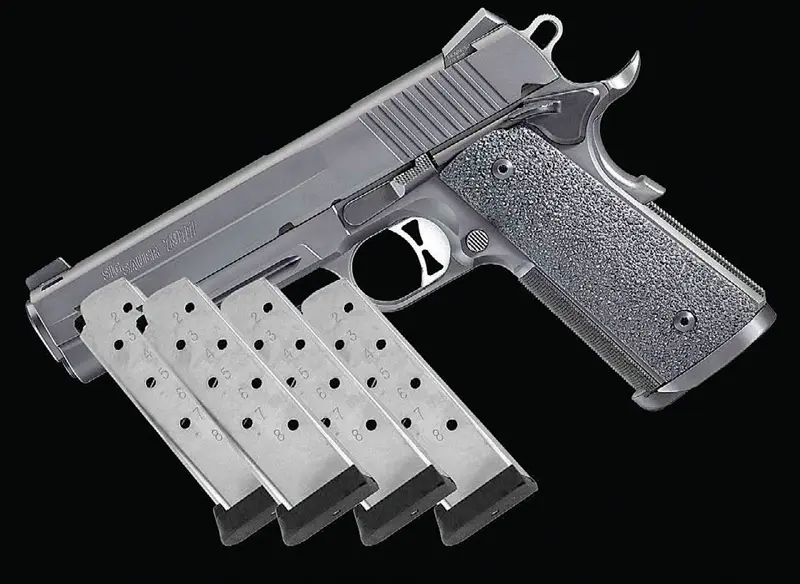
The TACOPS is a no-frills, full-sized fighting pistol designed for heavy-duty defensive work. Everything internally and externally on the gun has a practical function. It’s a handsome firearm cloaked in its black Nitron (ion bond) finish, which is rugged and rust resistant. The only components not dark are its barrel and adjustable aluminum trigger.
The forged stainless steel slide is topped by Novak-like fixed and dovetailed metal sights with SIGLITE three-dot phosphate luminous inserts. The sights must be exposed to light to glow. Its front sight post is 0.148-inch wide and, while appropriate for close combat, is a little too thick for long-range precision. I prefer a 0.100-inch front index for a more flexible sight, but I have to give up any night sight capabilities to acquire the thinner profile.
Currently, the SS Fastback Nightmare is the only other 1911 offered in .357 SIG caliber.

Bilateral rear cocking serrations flank the slide’s rear but are absent up front, where they are not missed. For those who prefer the front cocking serrations for loading and press checks, the Nitron finish offers a no-slip surface to perform the same task.
SS employs a massive external extractor that is complemented by an enlarged and relieved ejection port. The slide’s smooth dorsal surface is semi-oval and unadorned. Its upper flats are relieved and slightly narrower in width than the lower flats.
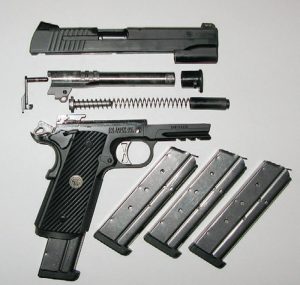
A match bushing and GI recoil plug contain the 22-pound recoil spring with flat coils, which permit greater range of reciprocation for more positive feeding and ejection.
The bushing also supports the slightly flared muzzle end of the match barrel. Lock-up is snug. Instead of checkering on the end of the recoil plug, SS has dished it out slightly, making it more comfortable to the touch while retaining tactile control during disassembly and assembly.
The TACOPS’ forged stainless steel receiver (frame) is standard in length and features a deeply cut and very prominent MIL-STD under-barrel accessory rail. Aft of that is a GI trigger guard ensconcing a lightened aluminum five-pound trigger that is adjustable for overtravel. The trigger guard is undercut for a higher grip, and above all these components is the extended slide release/stop.
Immediately behind the trigger is an enlarged projected magazine release and, while very accessible, it was not inadvertently activated when I pressed the pistol left side down on a hard surface.
Black Ergo XT grip panels with the SS logo feature a striated pattern with excellent purchase. The grips are affixed to the frame via Allen-head screws that remain locked during robust recoil.
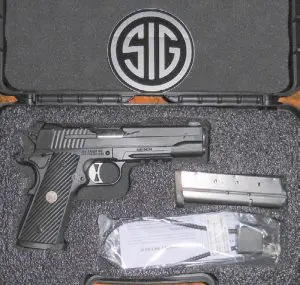
Front- and back-strap checkering is nicely done at 25 lines per inch. Part of the back strap is a nicely flared but unobtrusive magazine well, which I consider essential for positive magazine changes under stress. The grip safety is enlarged for efficient activation, especially for high-grip shooters. Thumb safeties are bilateral and enlarged, but smaller than I prefer, and feel sharp when activated.
Its lightweight and skeletonized hammer shortens lock time, while also being quite attractive.
Four eight-round stainless steel magazines are included with the piece, Checkmate converted .40 SW magazines with a spacer running down the magazine’s vertical rear flat. They are polished internally to enhance smooth operation and have round witness holes and modest polymer base pads. Followers are metal. Retail replacement will set you back $31.50.
The pistol’s five-inch stainless steel ramped match barrel has a 1:16 left-hand twist. Its rifling is broach cut and its muzzle slightly enlarged and crowned for firmer lock-up and enhanced accuracy with a fully supported chamber. A threaded barrel is offered as an option.
SCABBARD SHORTAGES
One of the nagging problems of railed SIG Sauer 1911s is finding a choice of holsters for them, since the frames and slides are not cut exactly to John Browning’s original specifications.
To allay that concern, SS has teamed up with Mitch Rosen, Blade Tech, and Black Point Tactical to produce beautiful and practical holsters for its brand.
FIELD TESTING
This is not a caliber for beginning shooters. If you can tolerate the recoil of a .45 ACP and the muzzle blast of a .357 Magnum revolver, the .357 SIG may be your self-defense caliber. Although Secret Service and Air Marshal colleagues assure me they have no difficulties qualifying weaker shooters with SIG Sauer .357 P229 combinations, a strong grip is recommended.
Shooters new to the caliber are often observed regripping the 1911 between shots. To achieve ten-yard rapid-fire accuracy, I had to pay strict attention to the TACOPS’ front sight. Although my shooting partner and I describe the TACOPS’ recoil as akin to its larger-caliber sibling, others disagree and opine that it is noticeably less than the .45 and more pleasant to shoot. When fired from the full-size and weighty 1911, recoil is attenuated.
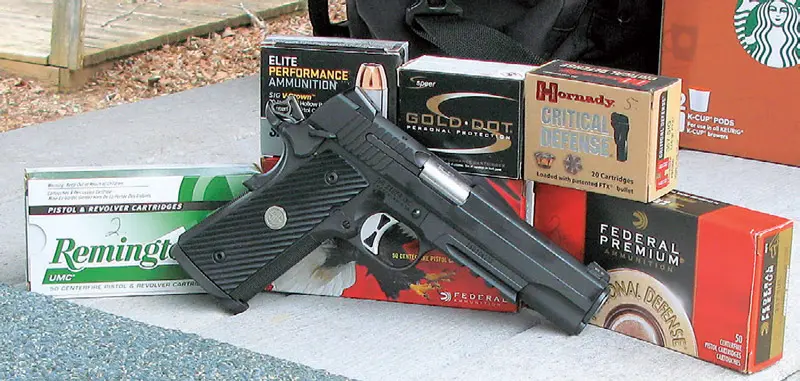
BETHARDS APPROVES
Top Shot: All Stars’ finalist William Bethards squeezed the accuracy potential out of the pistol and the various brands and loads of ammunition used in the evaluation. This 1911 and ammunition exhibited bullseye accuracy at 25 yards from a handheld rest.
With a six o’clock hold, the TACOPS printed high right, parallel to the three-inch black bull. The tightest five-round group was posted by Speer 125-grain GDHP at 1.26 inches.
As expected, velocities were high, and the same load, which is the Secret Service and Air Marshals’ caliber of choice, sprinted downrange at an average velocity of 1,413 feet-per-second (fps) and 554 foot pounds of kinetic energy.
But highest individual and average velocities were claimed by Buffalo Bore (BB) “Heavy .357, Low Flash” 125-grain JHP, averaging 1,487 fps. Studies have graphically demonstrated the .357 SIG’s ability to produce more severe wound channels than the 9mm Luger.
Another advantage is increased reliability. The bottlenecked .40 S&W caliber cases with the 9mm bullet are like putting a .35-caliber rod into a .40-caliber orifice. It functions like a flared magazine well for an easier and more efficient chambering.
Bethards liked its five-pound trigger. He described it as heavy but smooth with a little overtravel. I found it broke cleanly after a modest amount of take-up, and judged it a very good factory trigger even though its Series 80 trigger and firing-pin safety interface have more complicated geometry.
When it came to recoil control, it was déjà vu, because Bethards has an intimate association with .45 ACP siblings. He considered both the Federal and Speer 125-grain loads to be “hot” rounds. SIG Sauer’s loads “felt good and were very smooth.” Remington exhibited a lusty muzzle report and had lots of muzzle flash, which may have a psychological impact on downrange recipients, but could also negatively affect night vision. Hornady, a manufacturer of superior ammunition, surprised us with consistent high left flyers.
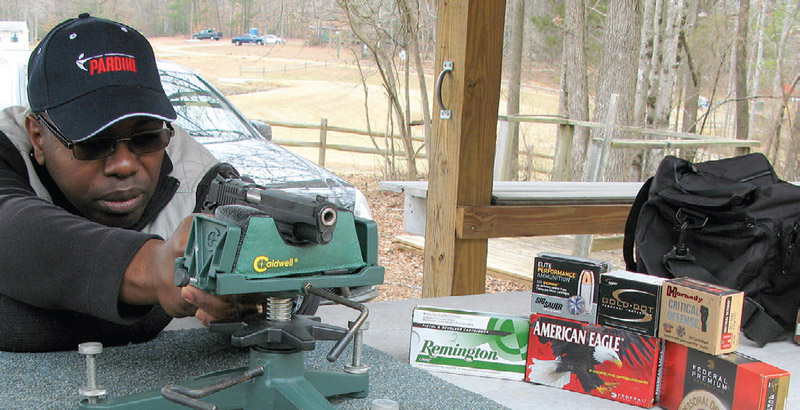
NIT PICKING
With an extended slide stop, there is little room for the bilateral thumb safeties. Larger than GI safeties, they are still too narrow and a bit sharp for my liking. Wider “gas pedal” type safeties would be easier to find and trip and would accommodate those who like to establish the highest grip possible with the ability to ride the safety with the dominant thumb.
Additionally, the MIL-STD under-barrel accessory rail is very sharp and capable of puncturing flesh. The rear Novaktype sexy sight is worthless as an aid to one-handed refunctioning. It needs the more standard SS vertical design.
The TACOPS has a really nice and subtle magazine well, but the base pads on the four eight-round sticks are barely adequate to ensure positive seating with the flared magazine well. A slightly larger base pad is called for.
The pistol was not cleaned during the evaluation. Disassembly and reassembly are typical 1911. No big surprises here. While the SIG manual indicates the bushing and recoil plug can be removed without tools, I needed a bushing wrench to accomplish takedown.
Hundreds of rounds of various weights and configurations were fired through the TACOPS without failure of any kind.
For experienced shooters who can handle the .357 SIG caliber, the TACOPS is a good choice for a defensive pistol. Suggested retail price is $1,221.
